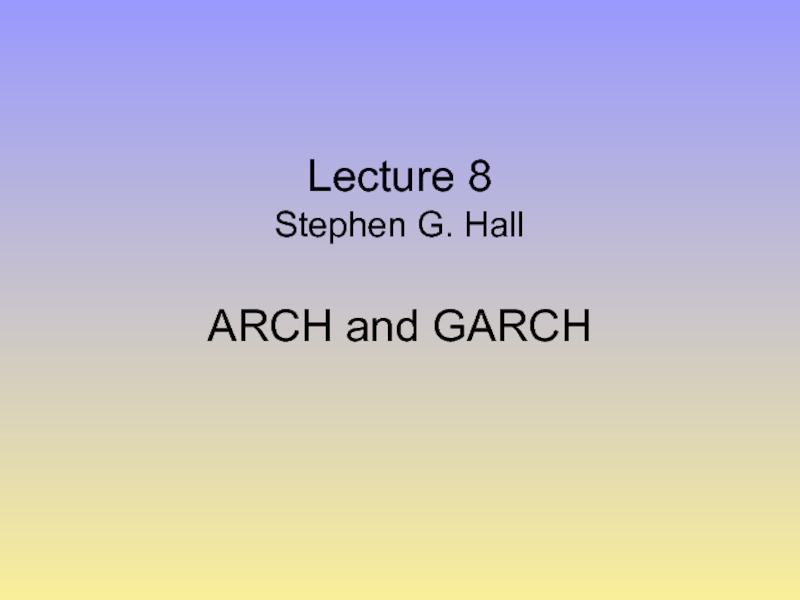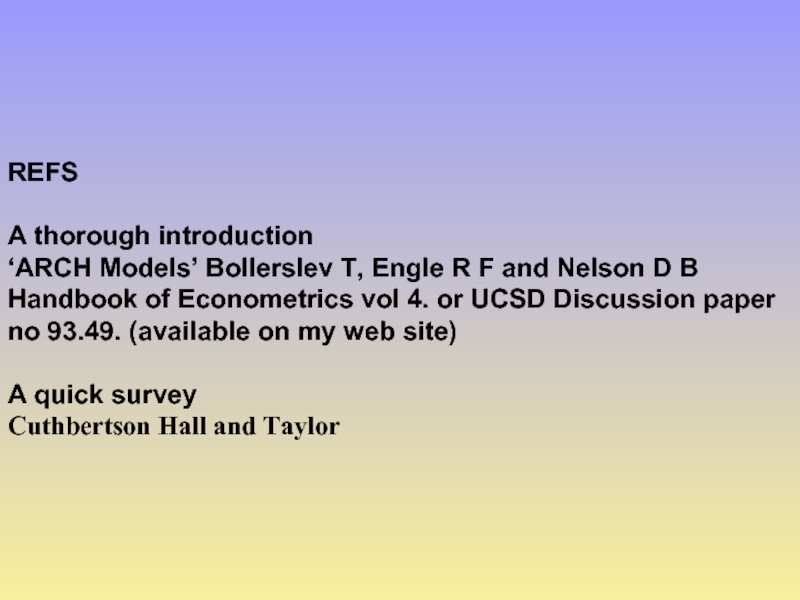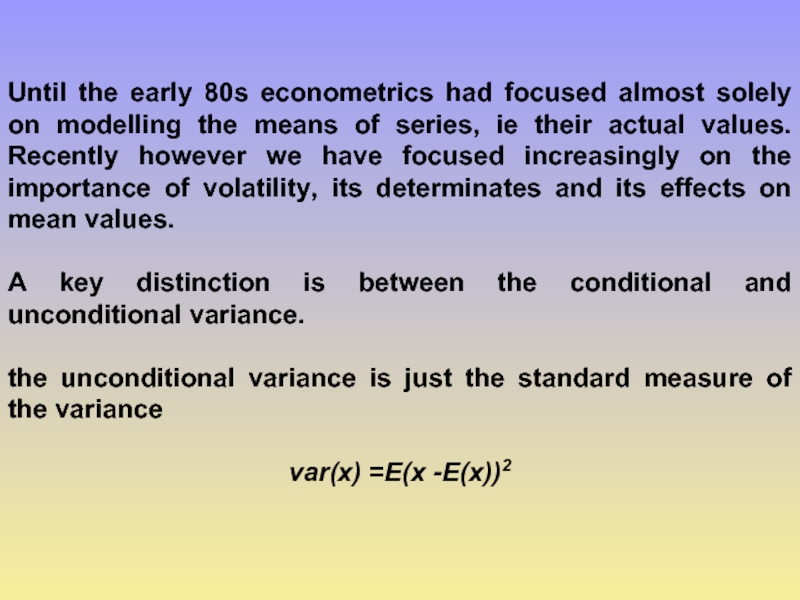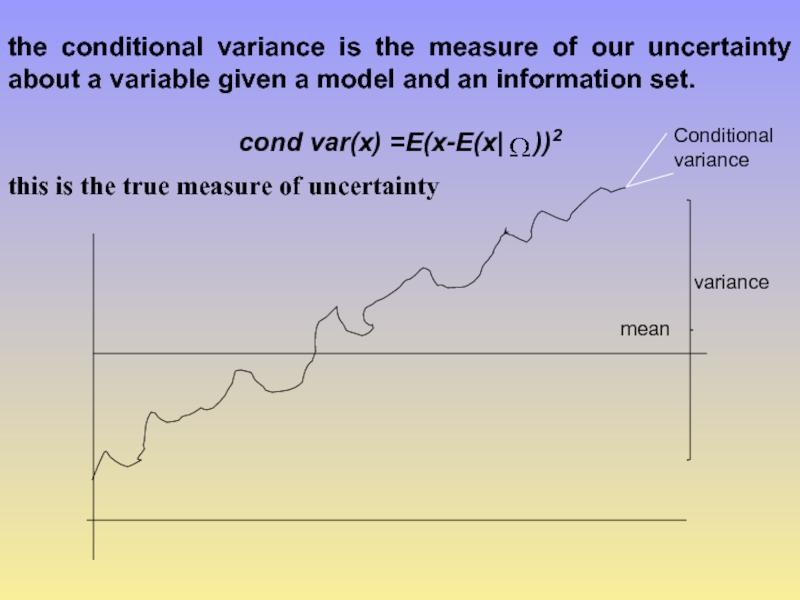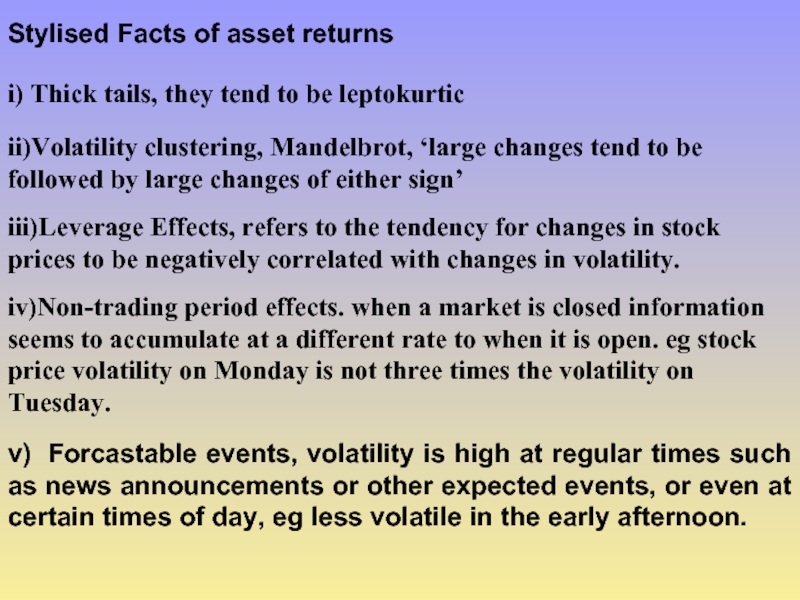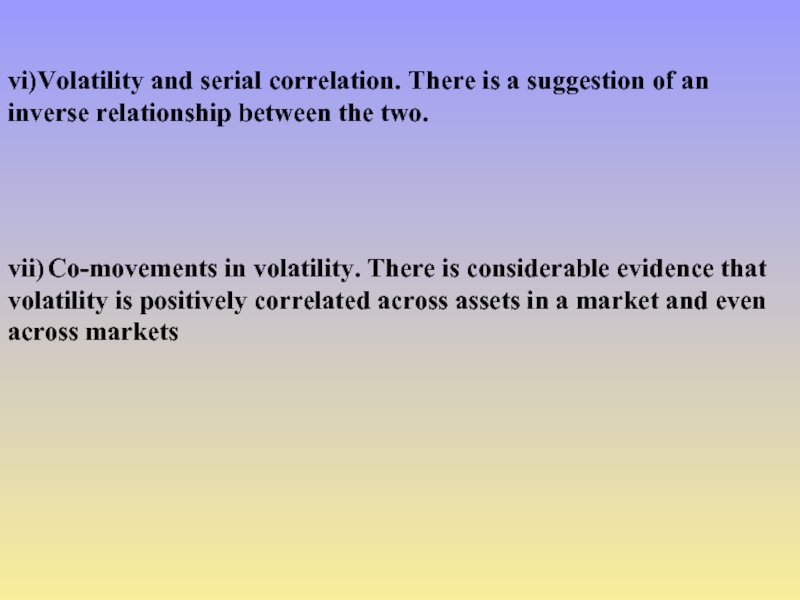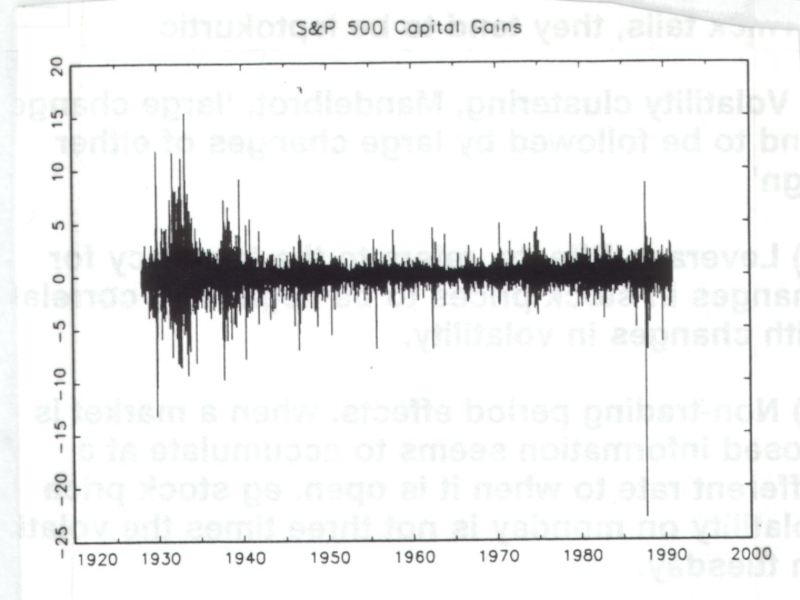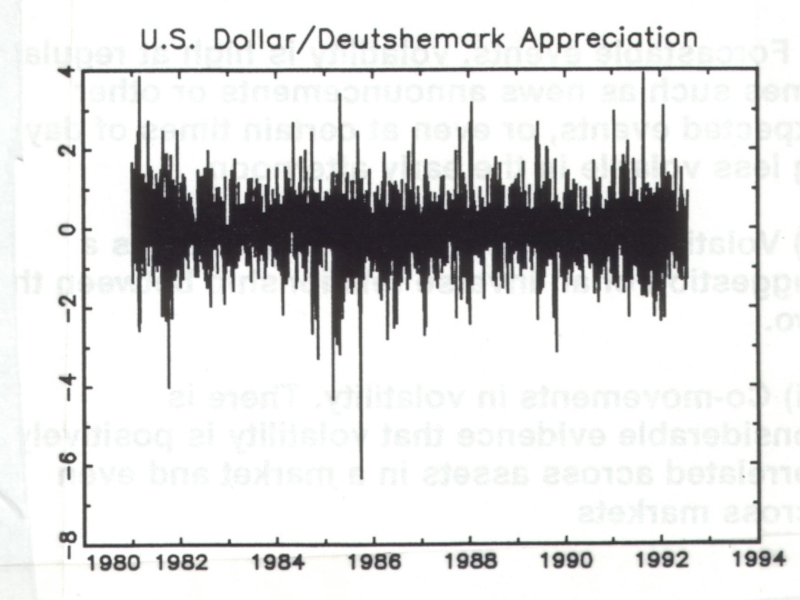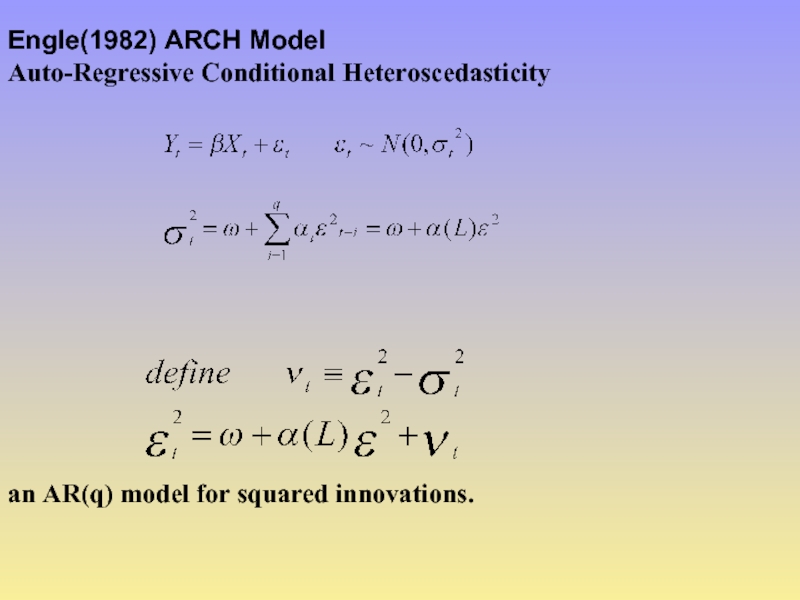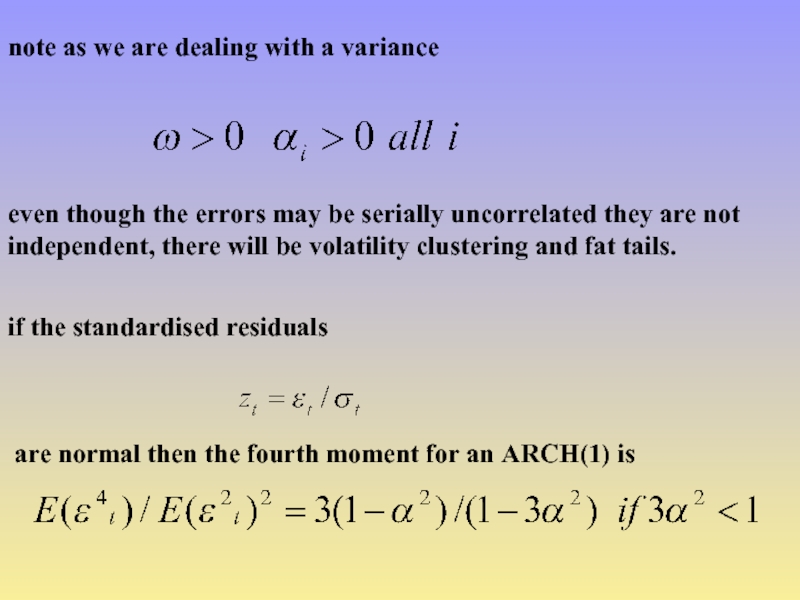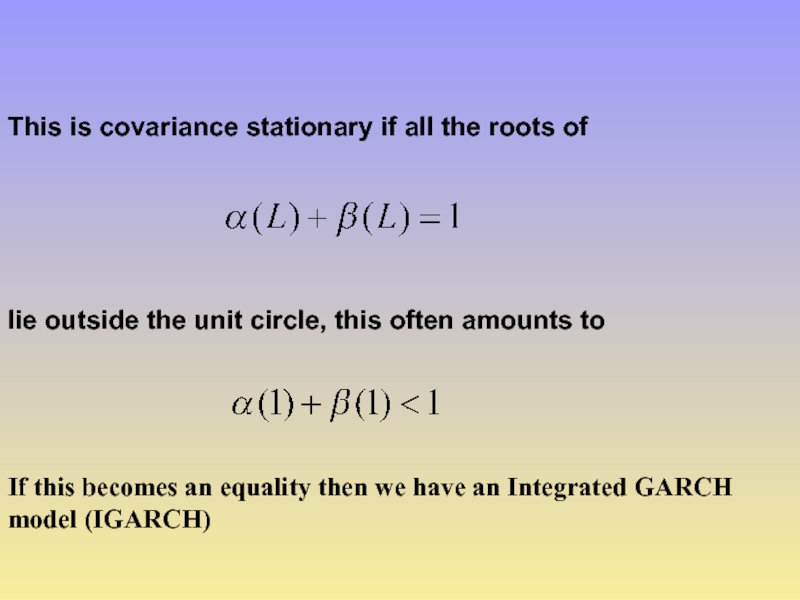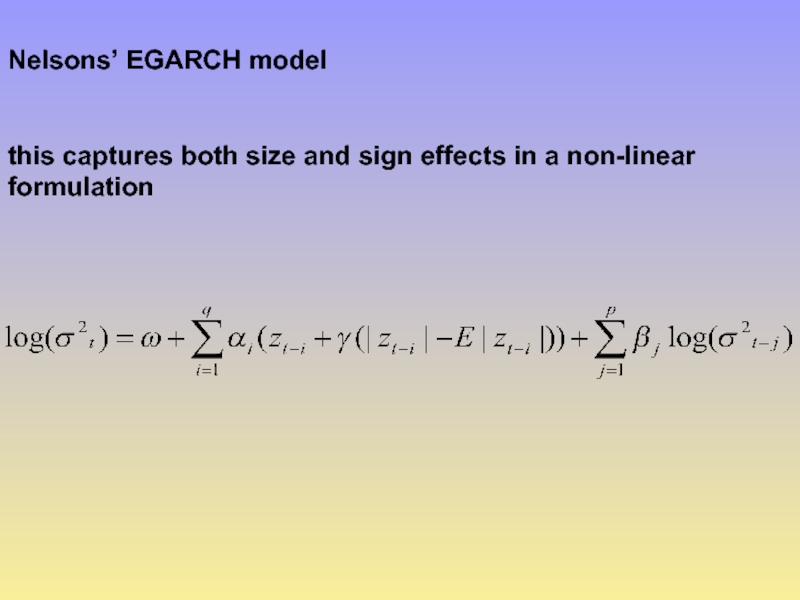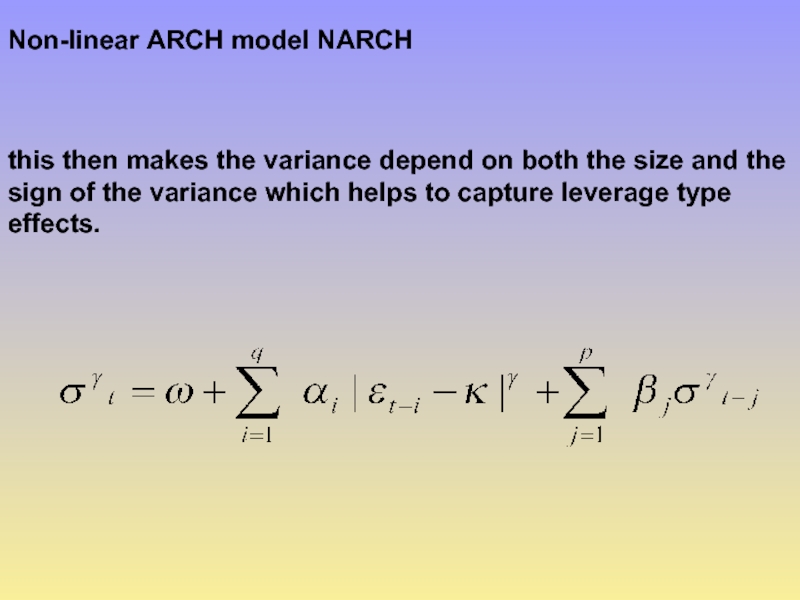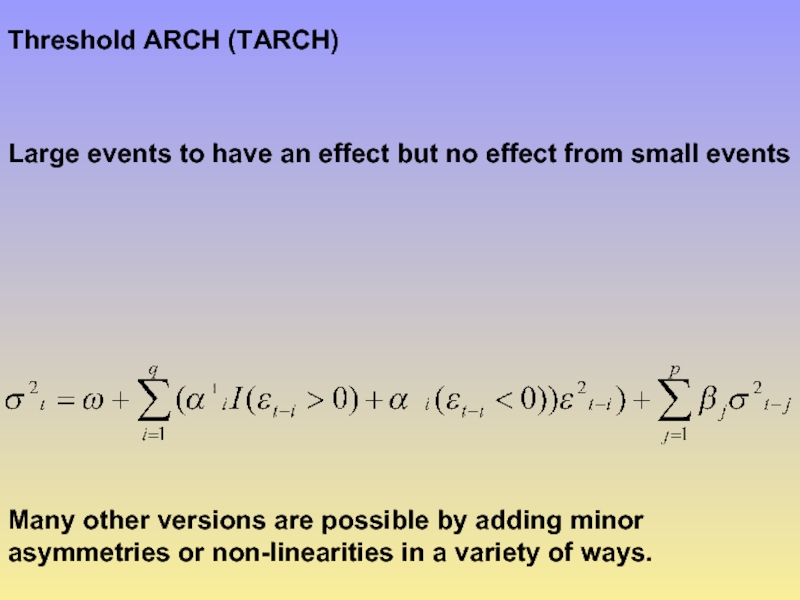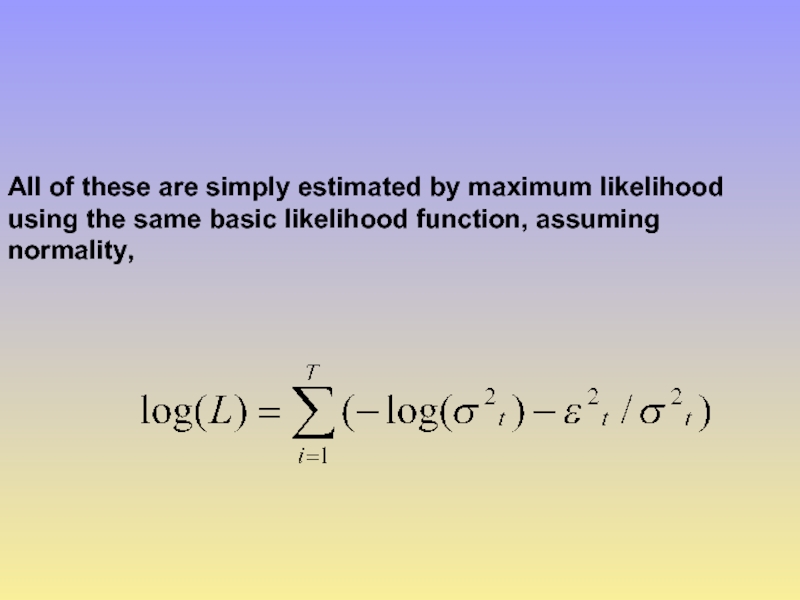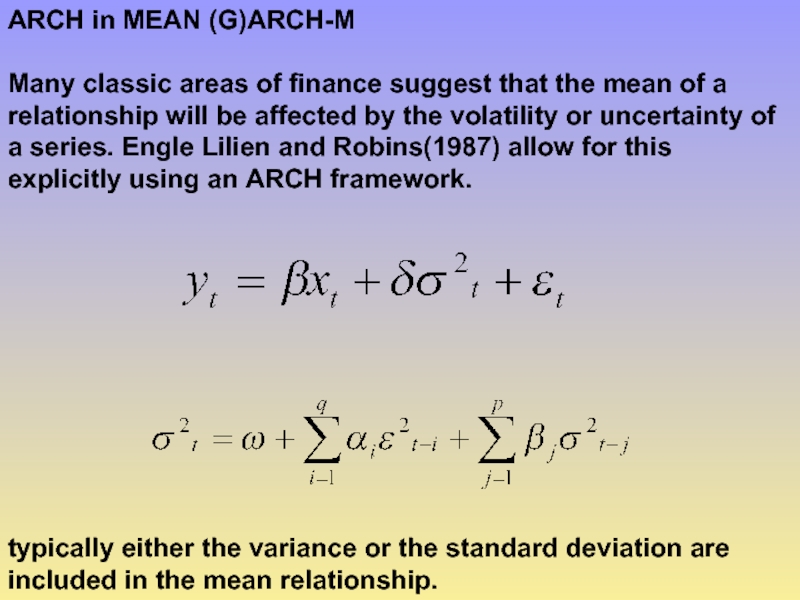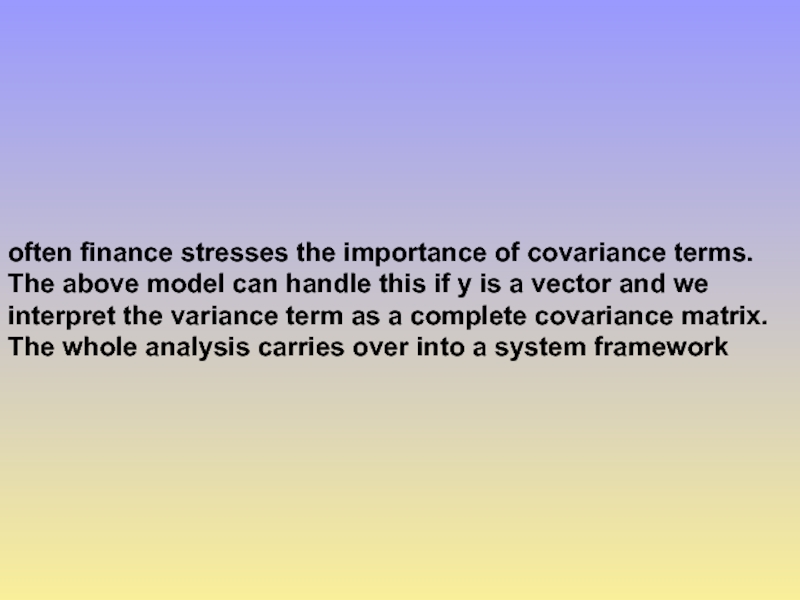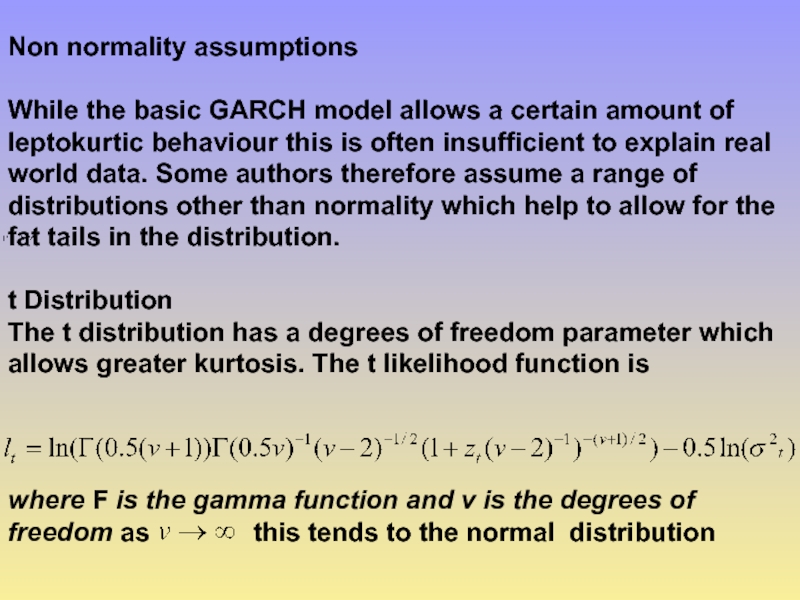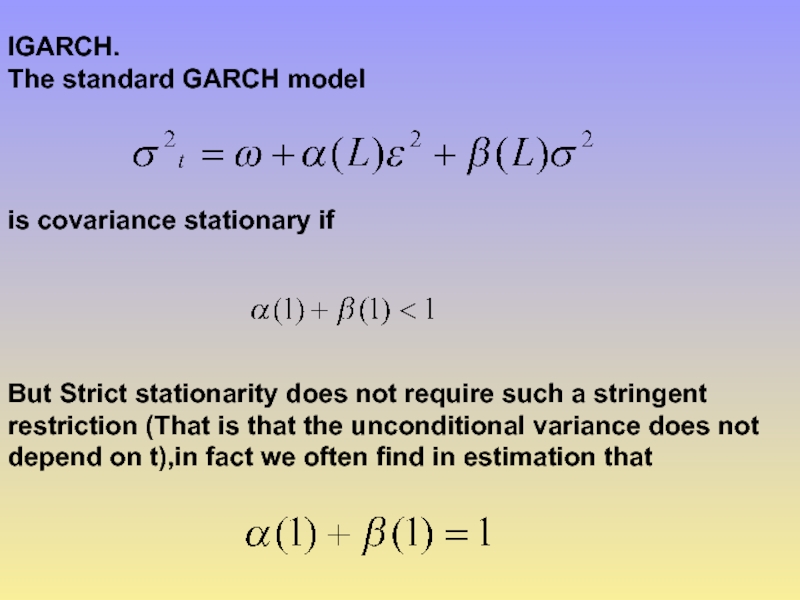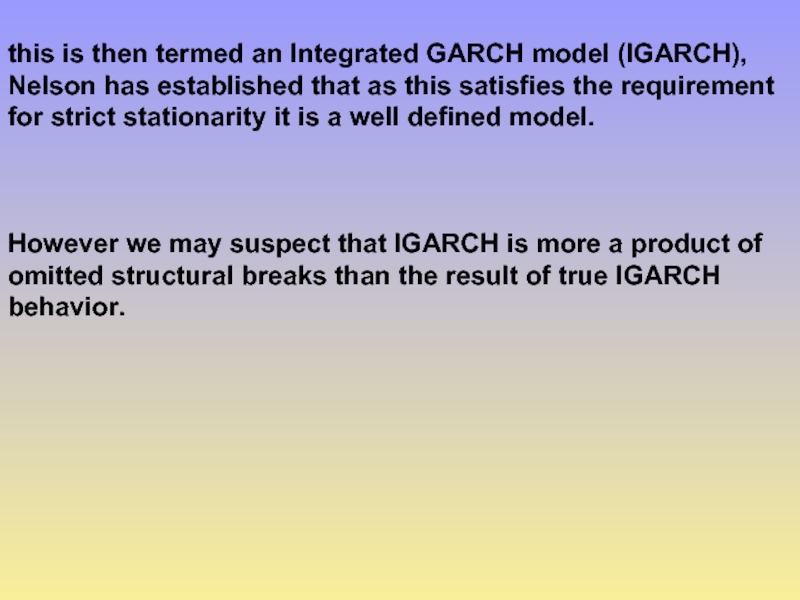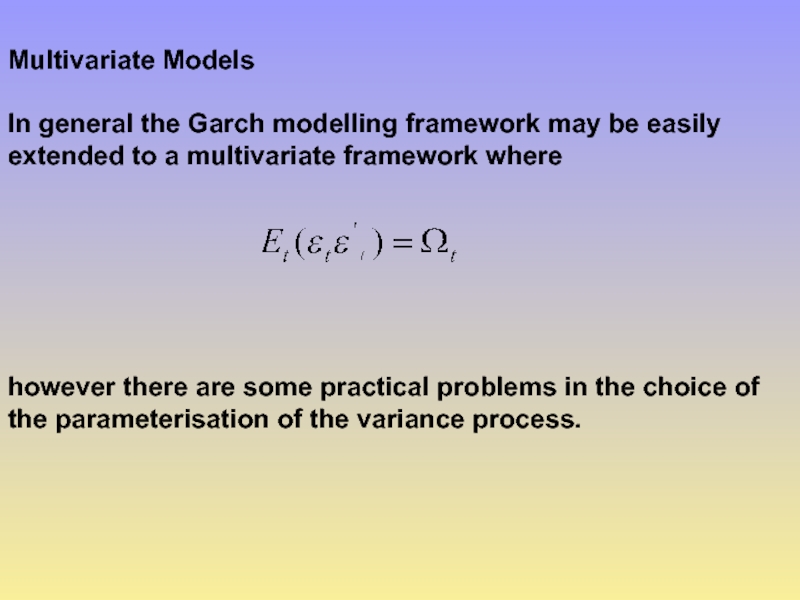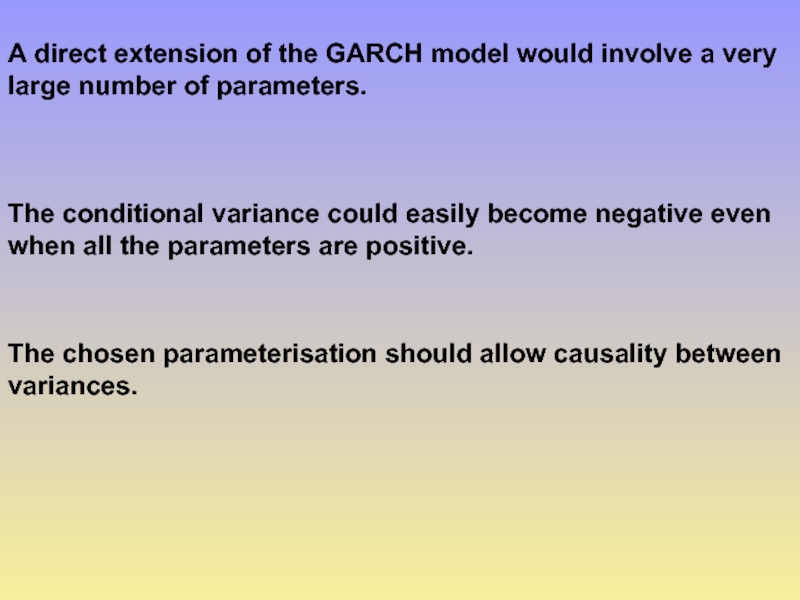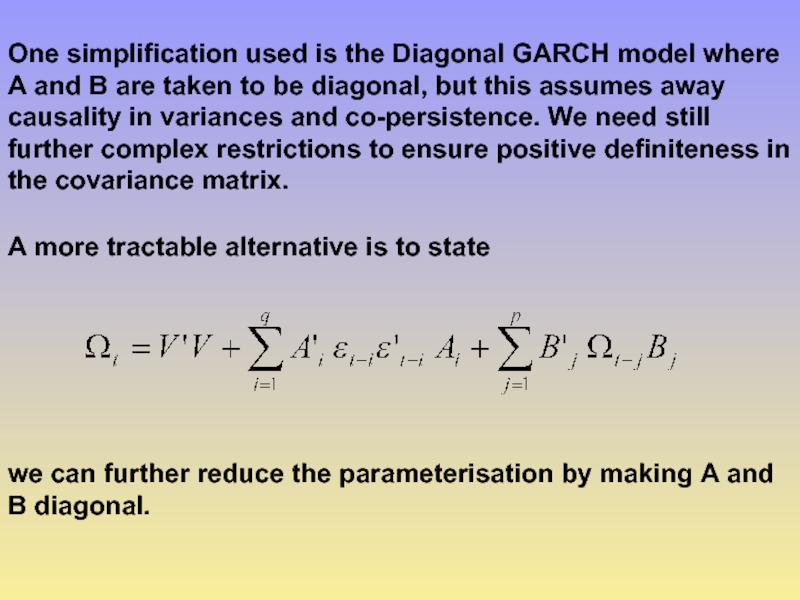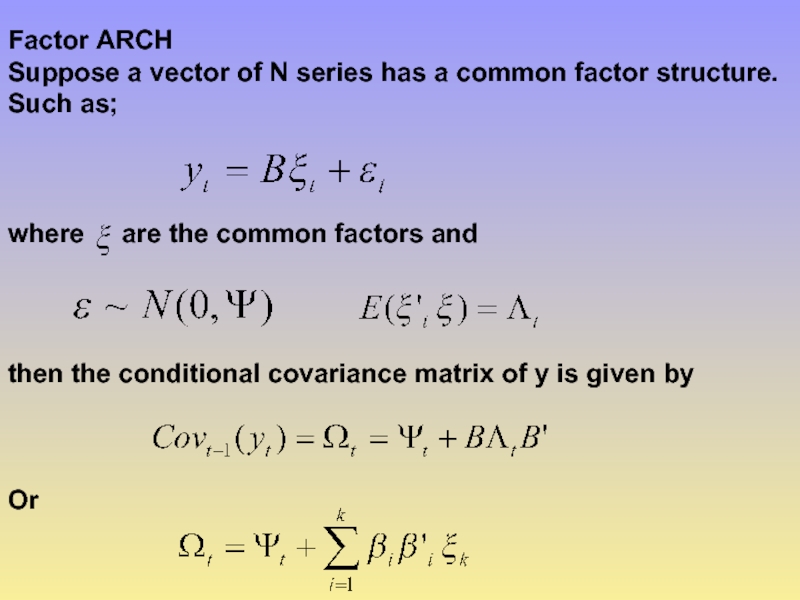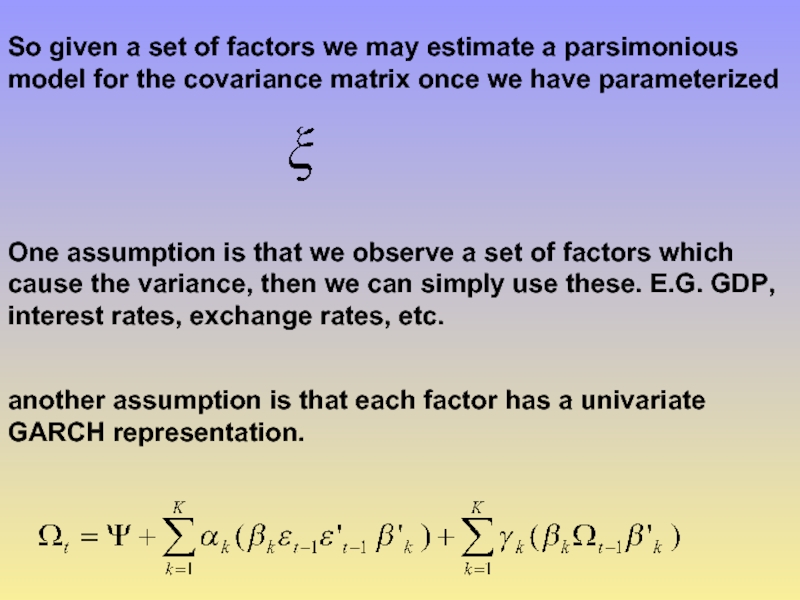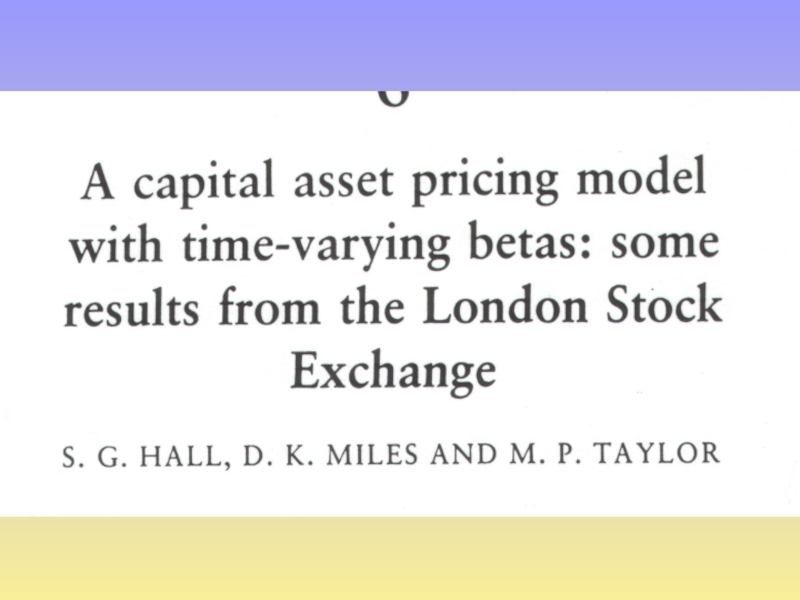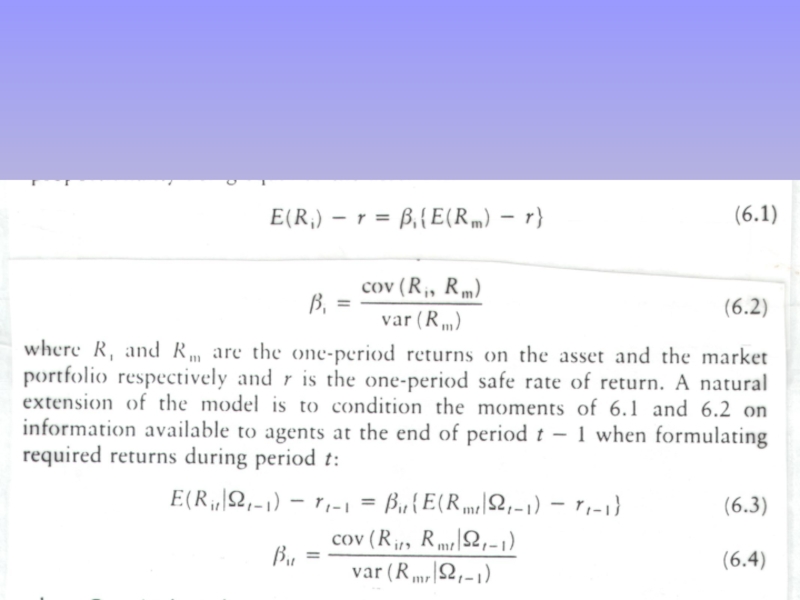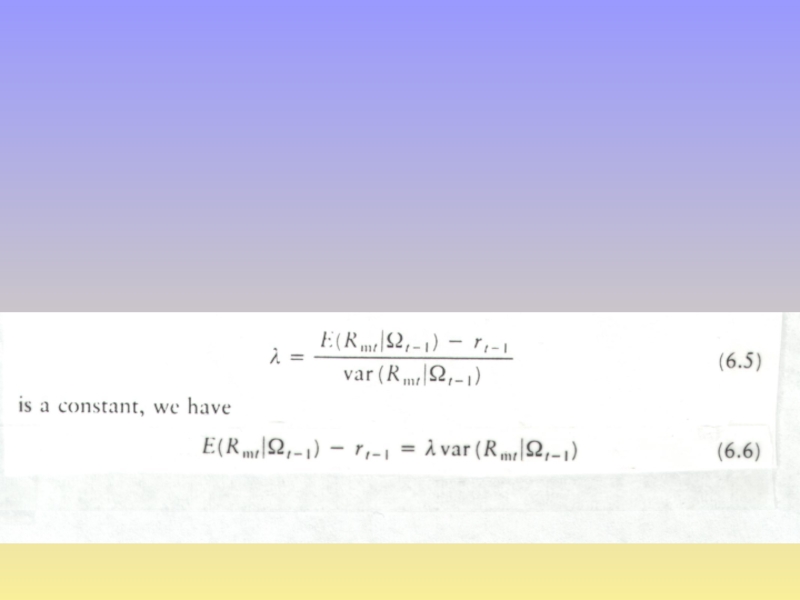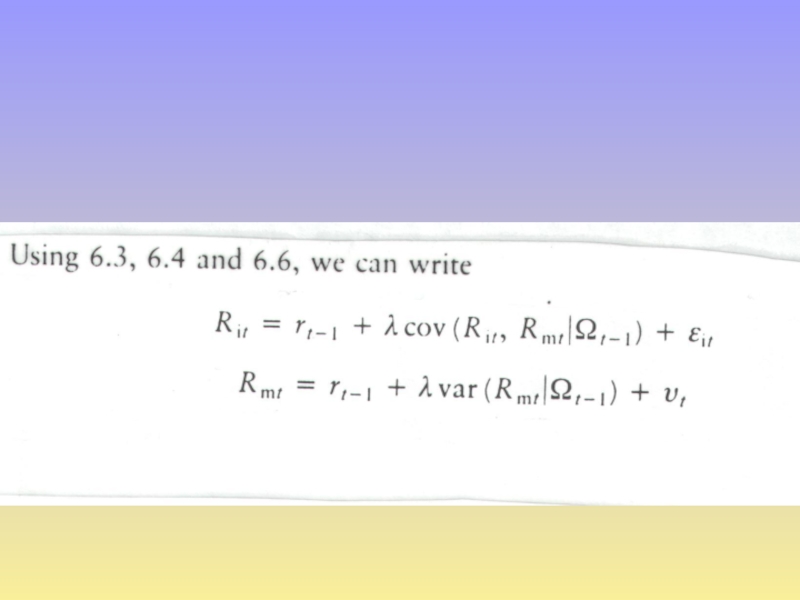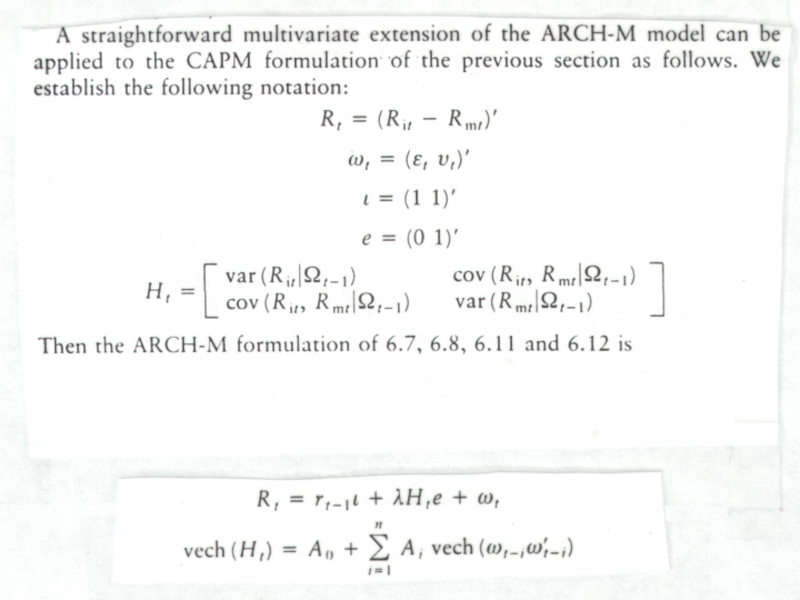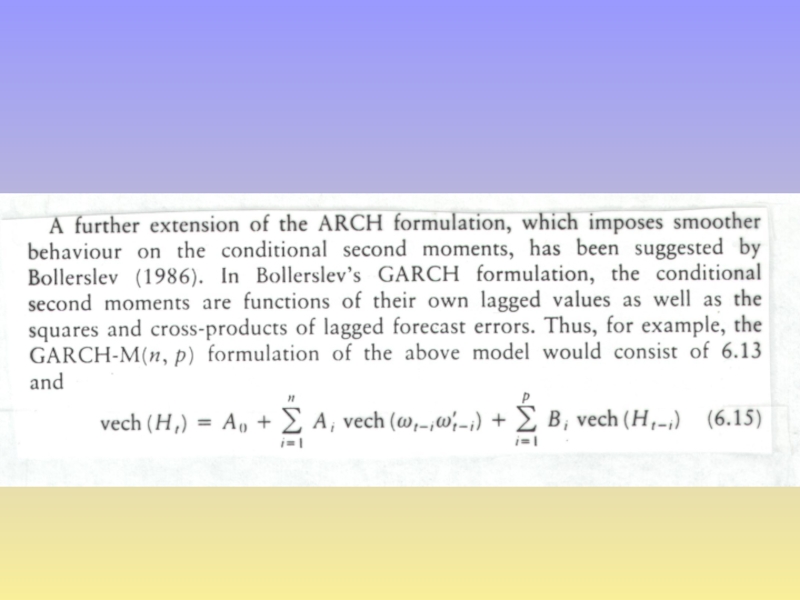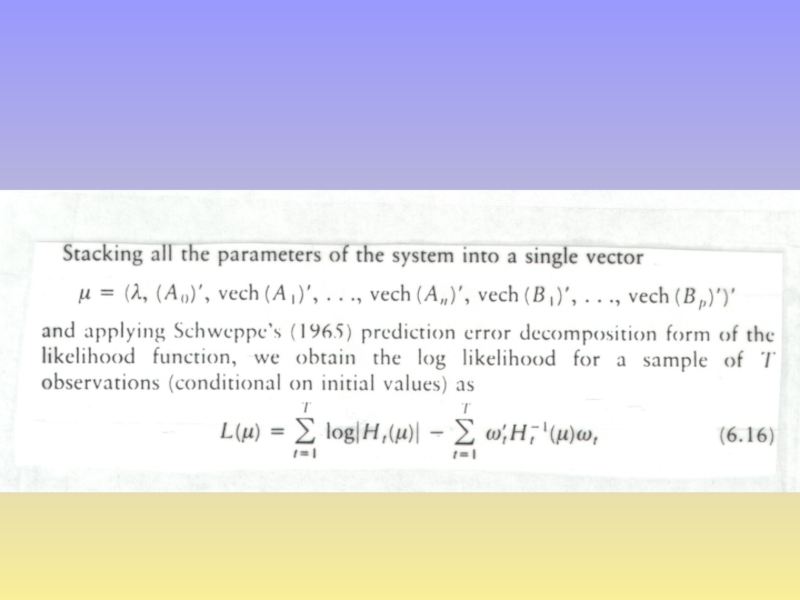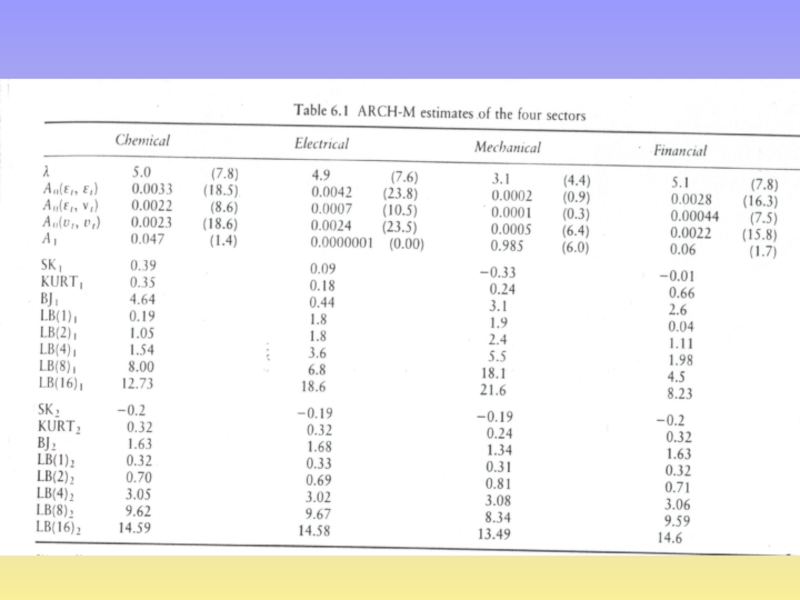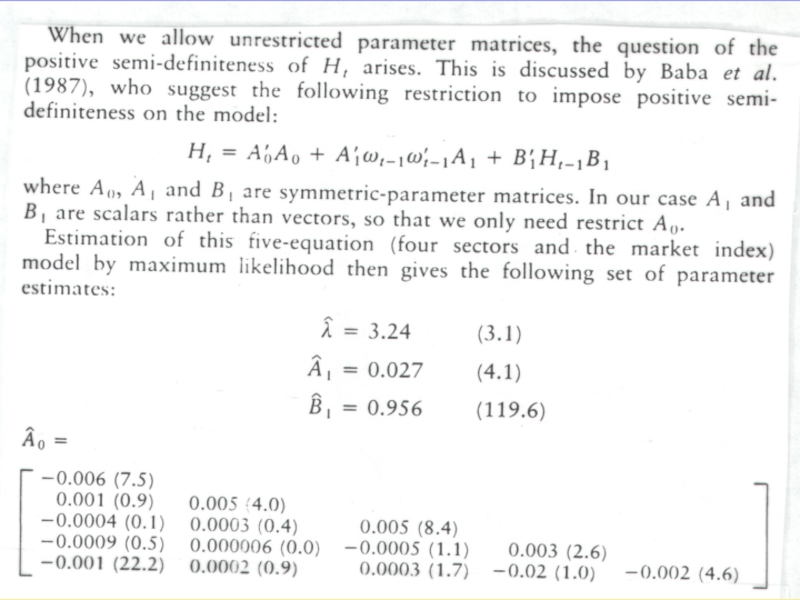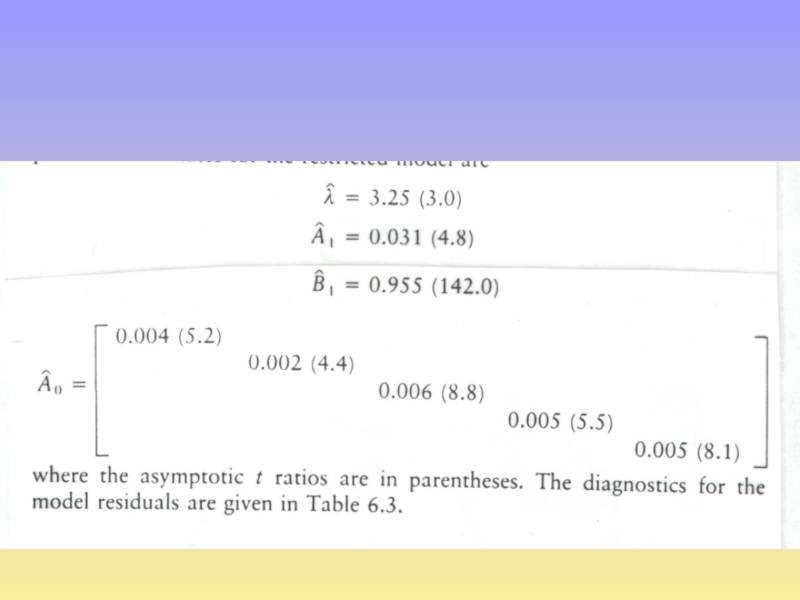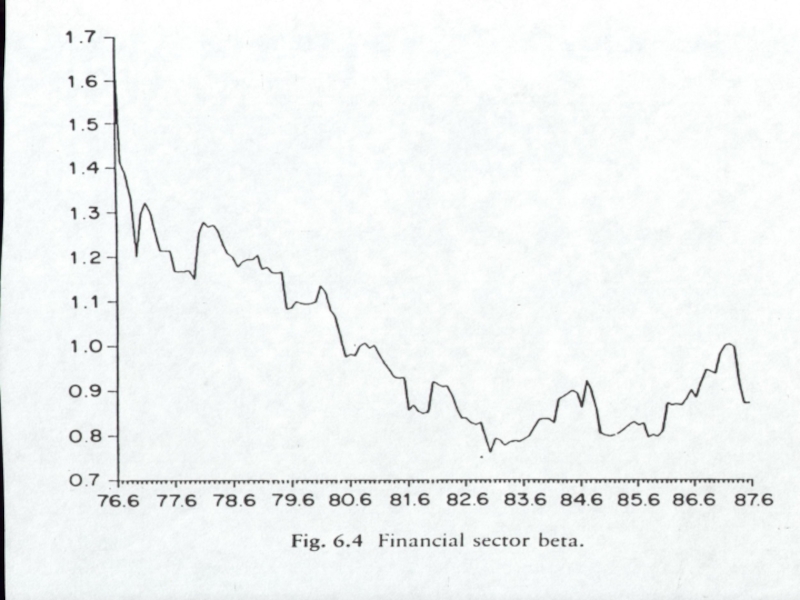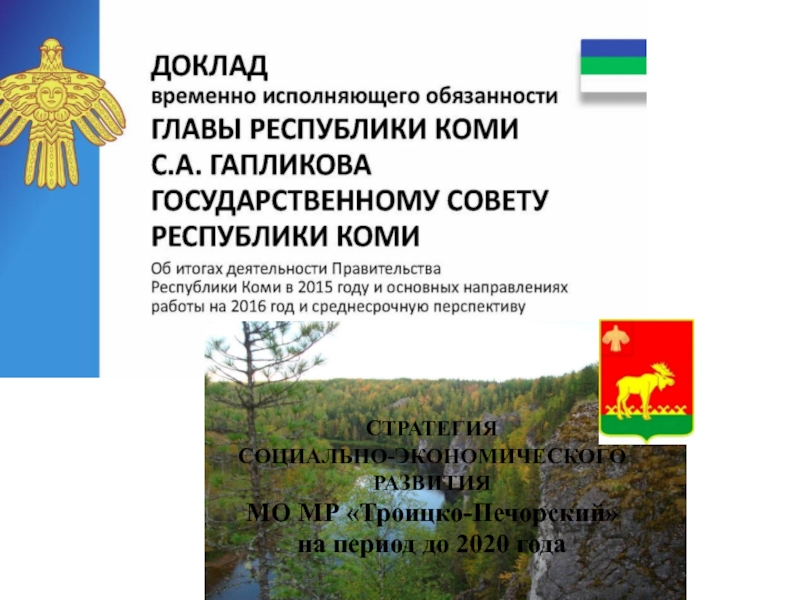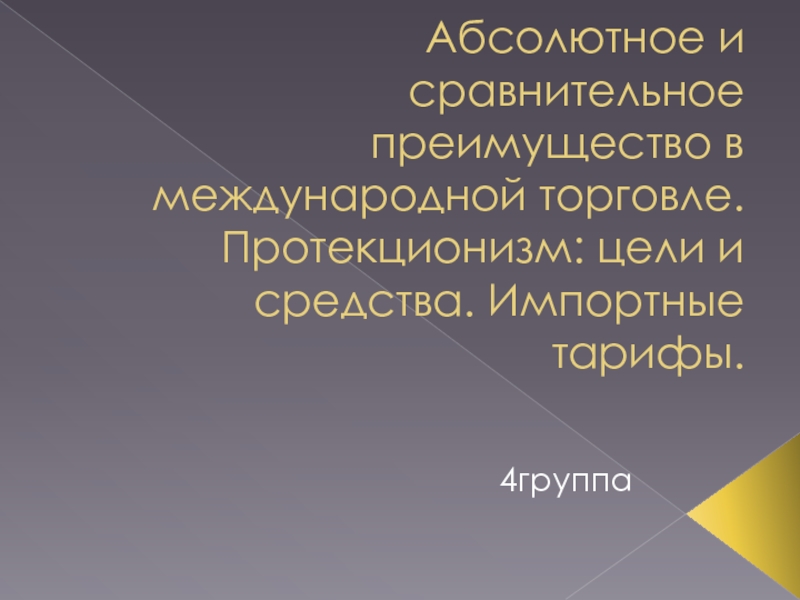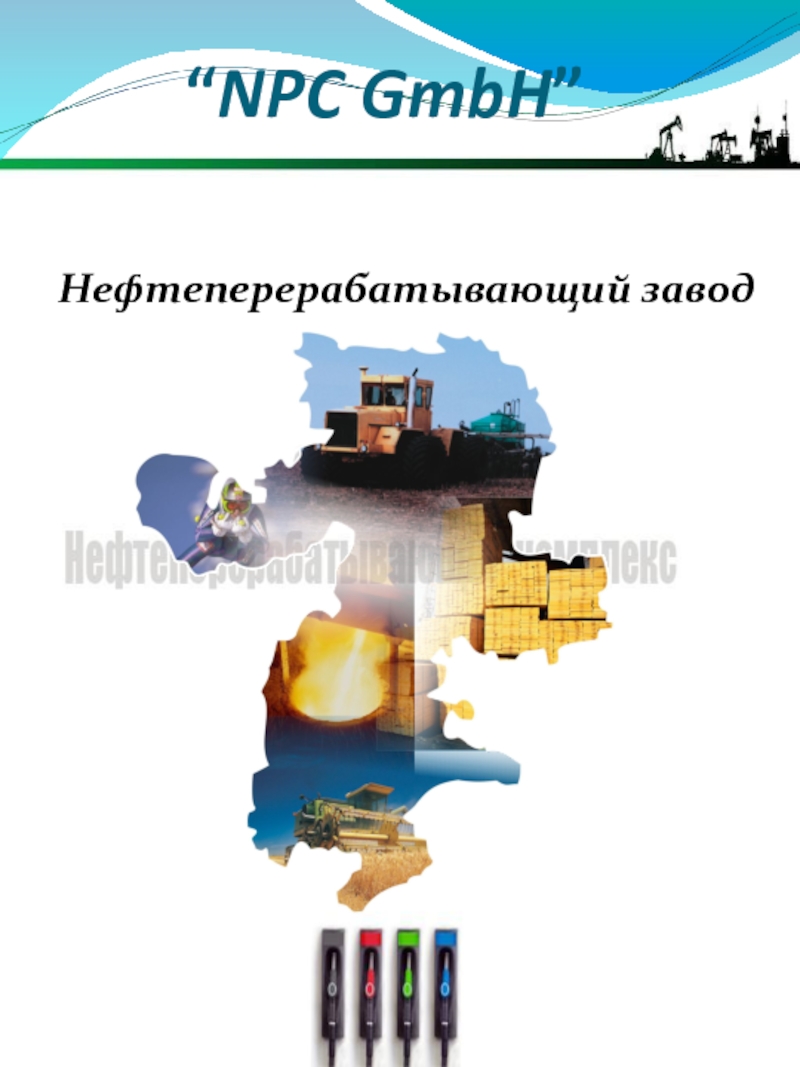- Главная
- Разное
- Дизайн
- Бизнес и предпринимательство
- Аналитика
- Образование
- Развлечения
- Красота и здоровье
- Финансы
- Государство
- Путешествия
- Спорт
- Недвижимость
- Армия
- Графика
- Культурология
- Еда и кулинария
- Лингвистика
- Английский язык
- Астрономия
- Алгебра
- Биология
- География
- Детские презентации
- Информатика
- История
- Литература
- Маркетинг
- Математика
- Медицина
- Менеджмент
- Музыка
- МХК
- Немецкий язык
- ОБЖ
- Обществознание
- Окружающий мир
- Педагогика
- Русский язык
- Технология
- Физика
- Философия
- Химия
- Шаблоны, картинки для презентаций
- Экология
- Экономика
- Юриспруденция
Hall ARCH and GARCH презентация
Содержание
- 1. Hall ARCH and GARCH
- 2. REFS A thorough introduction ‘ARCH Models’
- 3. Until the early 80s econometrics had focused
- 4. the conditional variance is the measure of
- 5. Stylised Facts of asset returns i) Thick
- 6. vi)Volatility and serial correlation. There is a
- 9. Engle(1982) ARCH Model Auto-Regressive Conditional Heteroscedasticity
- 10. note as we are dealing with a
- 11. GARCH (Bollerslev(1986)) In empirical work with
- 12. This is covariance stationary if all the
- 13. Nelsons’ EGARCH model this captures
- 14. Non-linear ARCH model NARCH this then
- 15. Threshold ARCH (TARCH) Many other
- 16. All of these are simply estimated by
- 17. ARCH in MEAN (G)ARCH-M Many classic
- 18. often finance stresses the importance of covariance
- 19. Non normality assumptions While the basic
- 20. IGARCH. The standard GARCH model
- 21. this is then termed an Integrated GARCH
- 22. Multivariate Models In general the Garch
- 23. The conditional variance could easily become negative
- 24. Vector ARCH let vech denote the
- 25. One simplification used is the Diagonal GARCH
- 26. Factor ARCH Suppose a vector of N
- 27. So given a set of factors we
Слайд 2REFS
A thorough introduction
‘ARCH Models’ Bollerslev T, Engle R F and Nelson
A quick survey
Cuthbertson Hall and Taylor
Слайд 3Until the early 80s econometrics had focused almost solely on modelling
A key distinction is between the conditional and unconditional variance.
the unconditional variance is just the standard measure of the variance
var(x) =E(x -E(x))2
Слайд 4the conditional variance is the measure of our uncertainty about a
cond var(x) =E(x-E(x| ))2
this is the true measure of uncertainty
mean
variance
Conditional variance
Слайд 5Stylised Facts of asset returns
i) Thick tails, they tend to be
ii)Volatility clustering, Mandelbrot, ‘large changes tend to be followed by large changes of either sign’
iii)Leverage Effects, refers to the tendency for changes in stock prices to be negatively correlated with changes in volatility.
iv)Non-trading period effects. when a market is closed information seems to accumulate at a different rate to when it is open. eg stock price volatility on Monday is not three times the volatility on Tuesday.
v) Forcastable events, volatility is high at regular times such as news announcements or other expected events, or even at certain times of day, eg less volatile in the early afternoon.
Слайд 6vi)Volatility and serial correlation. There is a suggestion of an inverse
vii) Co-movements in volatility. There is considerable evidence that volatility is positively correlated across assets in a market and even across markets
Слайд 9Engle(1982) ARCH Model
Auto-Regressive Conditional Heteroscedasticity
an AR(q) model for squared innovations.
Слайд 10note as we are dealing with a variance
even though the
if the standardised residuals
are normal then the fourth moment for an ARCH(1) is
Слайд 11GARCH (Bollerslev(1986))
In empirical work with ARCH models high q is
which is an ARMA(max(p,q),p) model for the squared innovations.
Слайд 12This is covariance stationary if all the roots of
lie outside
If this becomes an equality then we have an Integrated GARCH model (IGARCH)
Слайд 14Non-linear ARCH model NARCH
this then makes the variance depend on
Слайд 15Threshold ARCH (TARCH)
Many other versions are possible by adding minor
Large events to have an effect but no effect from small events
Слайд 16All of these are simply estimated by maximum likelihood using the
Слайд 17ARCH in MEAN (G)ARCH-M
Many classic areas of finance suggest that the
typically either the variance or the standard deviation are included in the mean relationship.
Слайд 18often finance stresses the importance of covariance terms. The above model
Слайд 19Non normality assumptions
While the basic GARCH model allows a certain amount
t Distribution
The t distribution has a degrees of freedom parameter which allows greater kurtosis. The t likelihood function is
where F is the gamma function and v is the degrees of freedom as this tends to the normal distribution
Слайд 20IGARCH.
The standard GARCH model
is covariance stationary if
But Strict stationarity
Слайд 21this is then termed an Integrated GARCH model (IGARCH), Nelson has
However we may suspect that IGARCH is more a product of omitted structural breaks than the result of true IGARCH behavior.
Слайд 22Multivariate Models
In general the Garch modelling framework may be easily extended
however there are some practical problems in the choice of the parameterisation of the variance process.
Слайд 23The conditional variance could easily become negative even when all the
A direct extension of the GARCH model would involve a very large number of parameters.
The chosen parameterisation should allow causality between variances.
Слайд 24Vector ARCH
let vech denote the matrix stacking operation
a general extension
this quickly produces huge numbers of parameters, for p=q=1 and n=5 there are 465 parameters to estimate here.
Слайд 25One simplification used is the Diagonal GARCH model where A and
A more tractable alternative is to state
we can further reduce the parameterisation by making A and B diagonal.
Слайд 26Factor ARCH
Suppose a vector of N series has a common factor
where are the common factors and
then the conditional covariance matrix of y is given by
Or
Слайд 27So given a set of factors we may estimate a parsimonious
One assumption is that we observe a set of factors which cause the variance, then we can simply use these. E.G. GDP, interest rates, exchange rates, etc.
another assumption is that each factor has a univariate GARCH representation.
